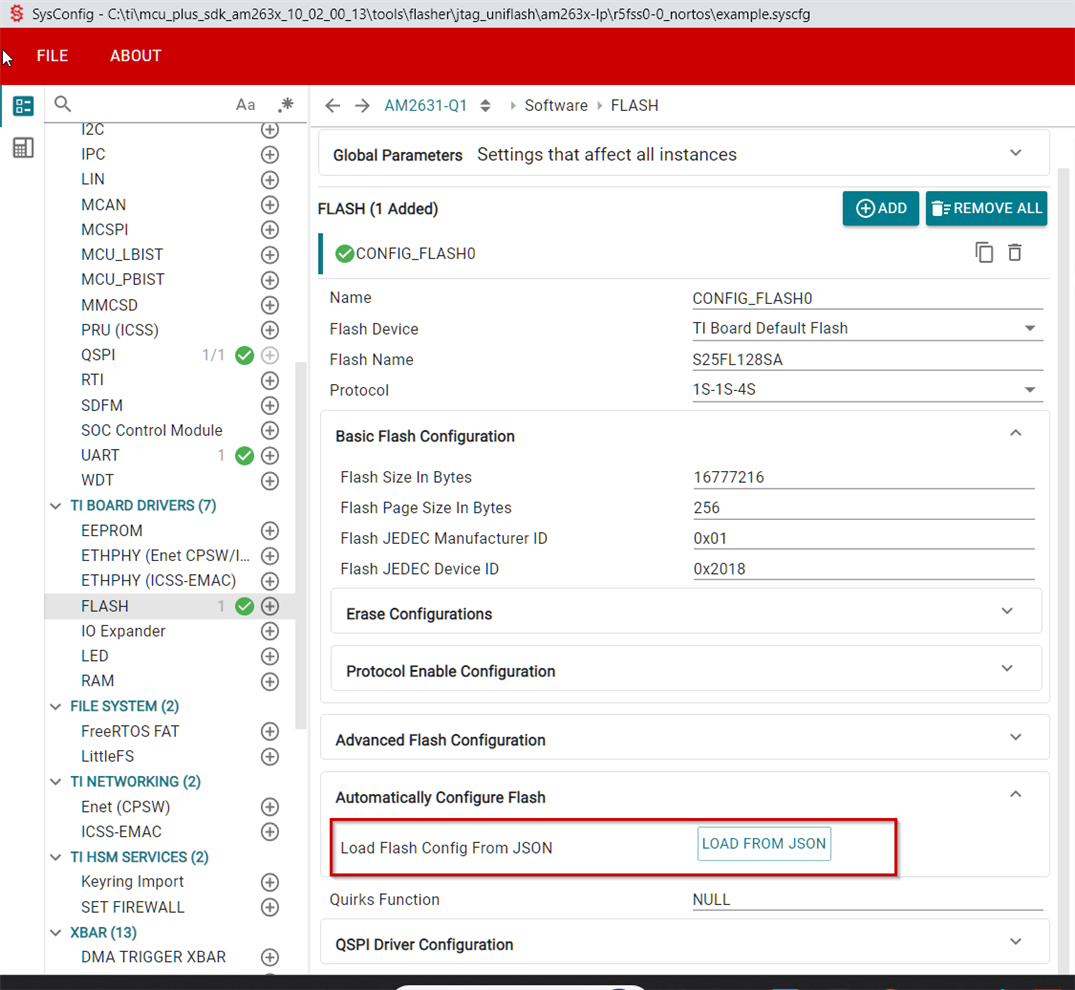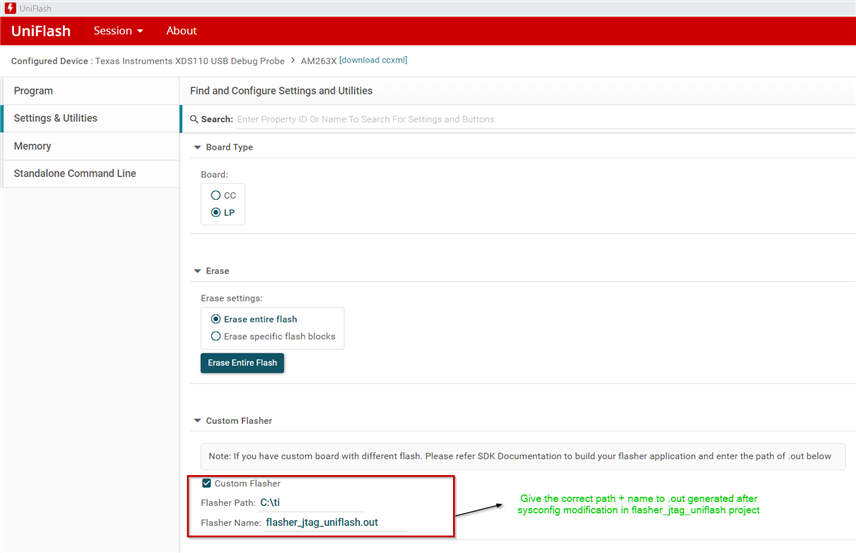Other Parts Discussed in Thread: LP-XDS110, UNIFLASH, SYSCONFIG
Tool/software:
Hello TI Support Team,
I have an LP-XDS110 connected to a custom AM2634 board and am not able to program QSPI via JTAG using Uniflash 9.2.0. These are the last few lines of output seen:
...
[8/18/2025, 4:23:01 PM] [INFO] Cortex_R5_0: GEL Output: ***All IP Clocks are Enabled***
[8/18/2025, 4:23:01 PM] [INFO] Cortex_R5_0: AM2634
[8/18/2025, 4:23:01 PM] [INFO] Cortex_R5_0: Board Selected : LP
[8/18/2025, 4:23:01 PM] [INFO] Cortex_R5_0: GEL Output: CPU reset (soft reset) has been issued through GEL on program load.
[8/18/2025, 4:23:22 PM] [ERROR] Cortex_R5_0: Run failed...
[8/18/2025, 4:23:22 PM] [ERROR] Cortex_R5_0: File Loader: Memory write failed: Timed out waiting for target to halt while executing uniflash.out
Between the last [INFO] message and the [ERROR] messages, the Load Program dialog stays up with "0 of 32752 at 0x60080000" showing for about 10 seconds (I am only trying to flash the .mcelf in this case; trying to flash SBL gives the same result).
With this same XDS-110 attached to our board, I am able to debug code in CCS so I believe the JTAG connections are correct. I can also connect the RXD/TXD to the board's UART and flash via serial port without issue (though it is of course slower and I have to change boot modes back and forth, so is not ideal).
I am using custom sbl_jtag_uniflash and sbl_uart_uniflash builds which have their syscfg modified to match the flash device on our board, and given the UART flashing works I am confident this part is correct. I also tried enabling the UART Debug log for the JTAG uniflash loader and saw the JTAG Uniflash Menu along with its 1,2,3,x choices come out the UART, which indicates that it is recognizing the flash device and gets past the driver initialization (I turned the UART off after doing this test, in case it interferes with the JTAG download). Are there other diagnostics I can perform using a custom uniflash loader build?
Interestingly, if I run from the command-line, I get output which looks successful but does not actually perform any flashing:
./dslite.sh --config AM2634.ccxml -e -s CustomFlashEnable=true -s FlasherCustomPath=<system path> -s FlasherCustomName=uniflash.out -s FlashVerboseMode=true -f bringup.mcelf
...
Cortex_R5_0: GEL Output: CPTS Clock Enabled (250MHz)
Cortex_R5_0: GEL Output:
***All IP Clocks are Enabled***
info: Cortex_R5_0: AM2634
info: Cortex_R5_0: Board Selected : CC
Cortex_R5_0: GEL Output: CPU reset (soft reset) has been issued through GEL on program load.
Loading Program: bringup.mcelf
Preparing ...
Finished
Setting PC to entry point.
Success
The last steps where it indicates it's loading the program are instantaneous and appear to have no effect, as booting the board results in it running what was already in flash. This is on a Mac OS system, using a .ccxml file exported from the Uniflash GUI.
If I can provide any further information please let me know – thank you!
- M. Fairman



